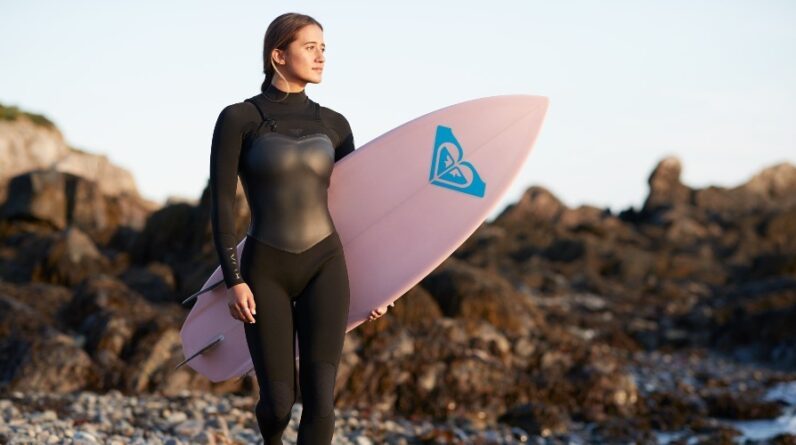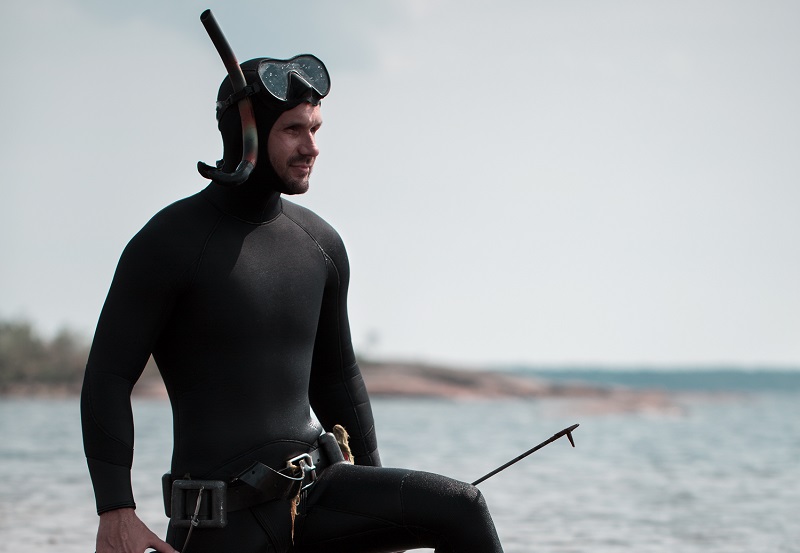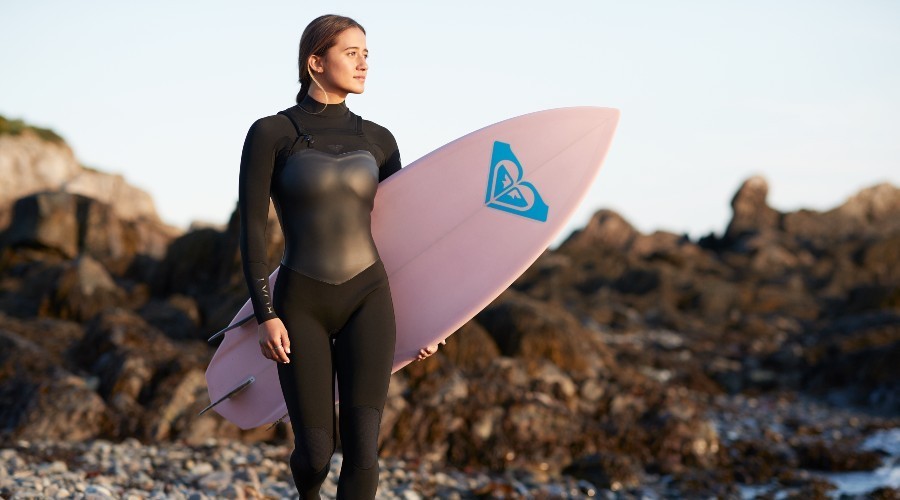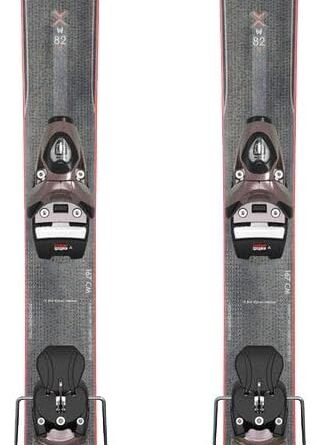
If you love spending time in the water, whether it’s for surfing, diving, or any other water sport, then you know how important it is to have the right gear. And when it comes to wetsuit accessories, finding the perfect wetsuit hood is essential for staying warm and comfortable in chilly waters. But with so many options available, how do you know which one is right for you? In this guide, we will explore the key factors to consider when selecting a wetsuit hood, including size, style, and material, to help you make an informed decision and enjoy your aquatic adventures to the fullest.

This image is property of standuppaddleboardworld.com.
A Guide to Selecting the Perfect Wetsuit Hood
When it comes to staying warm in cold water activities, a wetsuit hood is an essential piece of gear. It helps to retain body heat and protect your head from the elements. However, with so many options available on the market, choosing the right size and style of wetsuit hood can be overwhelming. Luckily, this comprehensive guide is here to help you make an informed decision.
Material
The material of a wetsuit hood plays a crucial role in its performance and comfort. Three common materials used in wetsuit hoods include neoprene, polyester, and fleece lining.
Neoprene
Neoprene is a synthetic rubber commonly used in wetsuits and wetsuit hoods. It provides excellent insulation and is known for its flexibility and durability. Neoprene hoods offer good protection against cold water and are available in different thicknesses.
Polyester
Polyester hoods are lightweight and quick-drying. They provide decent insulation, making them suitable for milder temperatures or as an additional layer under a wetsuit hood. Polyester hoods are often used in combination with neoprene to enhance comfort and warmth.
Fleece Lining
Fleece lining is often used in wetsuit hoods to increase warmth and comfort. It is soft against the skin and helps to retain body heat. The fleece lining is commonly found in neoprene hoods, providing an extra layer of insulation for colder conditions.
Thickness
The thickness of a wetsuit hood determines its level of insulation. Different thickness options are available to cater to various water temperatures and personal preferences. The most common thicknesses are 2mm, 3mm, 5mm, and 7mm.
A 2mm wetsuit hood is suitable for warmer waters or as an additional layer under a thicker hood. It provides minimal insulation and allows for greater mobility.
A 3mm wetsuit hood is a versatile option suitable for a wide range of water temperatures. It offers a balance between insulation and flexibility.
A 5mm wetsuit hood is ideal for colder waters. It provides excellent insulation and helps to retain body heat.
A 7mm wetsuit hood is designed for extremely cold conditions or for individuals who are more sensitive to the cold. It offers maximum insulation and protection against harsh temperatures.
Sizing
To ensure a comfortable and secure fit, it is essential to choose the right size wetsuit hood. Here are two key factors to consider when determining your size.
Measuring Head Circumference
To measure your head circumference accurately, use a flexible tape measure and wrap it around the widest part of your head, typically above your eyebrows and ears. Make sure the tape measure is snug but not too tight. Record the measurement in centimeters or inches.
Choosing the Right Size
Once you have your head circumference measurement, refer to the manufacturer’s size chart for the specific wetsuit hood you are interested in. Most size charts correlate head circumference measurements to specific sizes, such as small, medium, large, etc. Choose the size that corresponds to your head circumference measurement for the best fit.
If you are between sizes, it is generally recommended to opt for the larger size for a more comfortable fit. Keep in mind that different brands and models of wetsuit hoods may have slightly different size charts, so always refer to the specific manufacturer’s recommendations.

This image is property of ssl.quiksilver.com.
Style
Wetsuit hoods come in various styles, each offering different levels of coverage and versatility. Consider your personal preferences and the activities you will be participating in when choosing the right style for you.
Full Face Hood
A full face hood provides the most comprehensive coverage and protection. It features a face opening that allows for easy breathing and clear vision. Full face hoods are ideal for extremely cold conditions or individuals who prefer maximum coverage.
Balaclava Style Hood
A balaclava style hood covers the head, neck, and part of the face, leaving only the eyes and mouth exposed. It offers good insulation and versatility. Balaclava style hoods are commonly used in winter water sports or activities where additional protection from wind and cold is necessary.
Beanie Style Hood
A beanie style hood is a more minimalist option that covers the head but leaves the face fully exposed. It provides decent insulation and is suitable for moderate to mild temperatures or activities where full coverage is not required.
Hooded Vest
A hooded vest integrates the hood into a vest-like garment, providing additional insulation for the torso and head. Hooded vests are often worn as standalone pieces or layered under a wetsuit for added warmth in colder conditions.
Seams
The construction of wetsuit hoods plays a crucial role in their durability and water resistance. Several different seam types can be found in wetsuit hoods.
Flatlock Seams
Flatlock seams are the most common type of seams found in wetsuit hoods. They are created by overlapping two fabric panels and stitching them together. Flatlock seams offer good durability and allow for flexibility, making them suitable for less extreme water sports.
Glued and Blind-Stitched Seams
Glued and blind-stitched seams are considered more advanced and offer better water resistance compared to flatlock seams. They involve gluing the edges of the fabric panels together and then stitching them from the inside, creating a watertight seal. This construction method ensures minimal water penetration but may sacrifice some flexibility.
Seamless Construction
Some wetsuit hoods feature seamless construction, which eliminates the need for traditional seams altogether. Seamless hoods offer superior comfort and reduced chaffing or irritation. They are ideal for individuals with sensitive skin or those who prefer a more comfortable fit.

This image is property of cdn.wetsuitoutlet.co.uk.
Hood Closure
The closure system of a wetsuit hood determines how securely it fits around your head and neck. Different closure options are available, each offering its own advantages.
Drawstring Closure
A drawstring closure allows you to adjust the fit of the hood by tightening or loosening the drawstring around the face opening. This type of closure offers a customizable fit and helps to prevent water from entering the hood.
Velcro Closure
A velcro closure provides a quick and secure way to fasten the hood around your face. It offers easy adjustment and ensures a snug fit. Velcro closures are commonly found in hoods with full face or balaclava style designs.
Zipper Closure
A zipper closure is often used in hooded vests or hoods with a hooded vest-like design. It allows for easy on and off and provides a secure fit. Zipper closures are particularly useful when layering the hood under a wetsuit.
Fit and Comfort
The fit and comfort of a wetsuit hood are essential factors to consider for an enjoyable water experience. Here are a few aspects to keep in mind.
Snug Fit
A wetsuit hood should fit snugly around your head without feeling overly tight or constricting. A proper fit helps to keep the hood securely in place and prevents water from entering. Remember to consider the thickness of the hood when assessing the fit to ensure it provides adequate insulation.
Freedom of Movement
While a snug fit is important, you should still have enough freedom to move your head comfortably. The hood should not restrict your range of motion or impede your ability to see clearly. Opt for a size and style that allows for easy movement while maintaining a secure fit.
Chafing and Irritation
Pay attention to the material and construction of the wetsuit hood to avoid potential chafing or irritation. Smooth, seamless construction and high-quality materials can help minimize discomfort during extended wear. Additionally, consider wearing a rash guard or beanie under the hood for added comfort and protection.

This image is property of img.youtube.com.
Ventilation
Proper ventilation in a wetsuit hood helps to prevent moisture buildup and improves overall comfort during activities. Various ventilation features can be found in different hoods.
Vent Holes
Some wetsuit hoods feature strategically placed vent holes that allow air to circulate and prevent overheating. Vent holes are commonly found in hoods designed for more active water sports.
Breathable Panels
Hoods with breathable panels incorporate mesh or perforated materials that promote airflow and ventilation. These panels are often strategically placed in areas prone to heat accumulation, such as the forehead and temples.
Mesh Lining
Hoods with a mesh lining offer improved breathability and moisture management. The mesh helps to wick away sweat, keeping your head dry and comfortable during intense activities.
Designed Use
Consider the specific water sport or activity you will be participating in when choosing a wetsuit hood. Different hoods are designed with specific uses in mind, offering features tailored to the demands of each activity.
Surfing
For surfing, a wetsuit hood with good insulation and water resistance is essential. Consider hoods with sealed seams and a secure closure system to withstand the waves.
Diving
Diving often requires hoods with thicker insulation to combat colder water temperatures. Look for hoods with glued and blind-stitched seams and a snug fit to provide maximum warmth.
Kayaking
When kayaking, a balance between insulation and breathability is important. Opt for hoods with ventilation features and a comfortable fit that allows for easy movement.
Stand-up Paddleboarding (SUP)
SUP activities typically involve more upper body movement, so hoods with a balaclava or beanie style design are suitable. Look for hoods with a secure closure system to ensure they stay in place during paddling.
Other Water Sports
Depending on the specific water sport you engage in, choose a wetsuit hood that aligns with the activity’s demands. Consider factors such as insulation, water resistance, fit, and ventilation to enhance your overall experience.

This image is property of www.ospreyactionsports.co.uk.
Warranty and Return Policy
Before making a final purchase, take the time to review the manufacturer’s warranty and return policy. A good warranty ensures peace of mind and protection against manufacturing defects. Additionally, a customer-friendly return policy allows you to exchange or return the product if it does not meet your expectations.
By following this guide and carefully considering the material, thickness, sizing, style, seams, hood closure, fit and comfort, ventilation, and designed use, you can confidently select the perfect wetsuit hood for your cold water adventures. Remember to prioritize your comfort, protection, and enjoyment to make the most out of your water activities. Stay warm, stay safe, and have fun!






